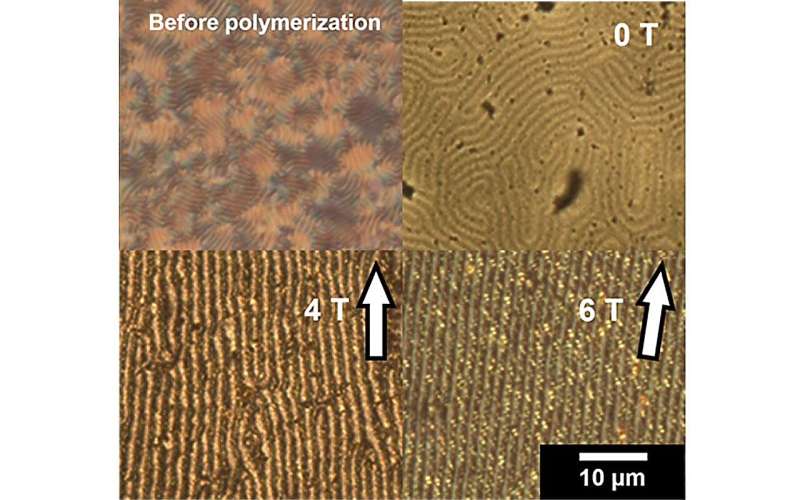This article has been reviewed according to Science X's editorial process and policies. Editors have highlighted the following attributes while ensuring the content's credibility:
fact-checked
trusted source
proofread
Helical and striped arrangement of conducting polymers

Conductive polymers are also referred to as synthetic metals owing to their electrical conductivity. As precursors of conductive polymers, conjugated polymers are currently being developed as new optical materials to replace inorganic materials, which impart not only electrical conductivity but also luminescence, rotation, and light absorption.
Conjugated polymers with right- or left-handed helically grown molecules, particularly, can emit circularly polarized light and rotate light. Furthermore, research on magnetism as a property of synthetic metals is currently underway.
In this study, published in Materials Advances, polythiophenes with stable radicals on the side chains, serving as a source of magnetism, were synthesized in liquid crystals with chiral (mirror-image isomerism) and helical structures.
Researchers found that the obtained polymer transferred the helical structure of the liquid crystal, and the radicals (spins) are arranged in a helical shape. Furthermore, when the polymer was oriented using a superconducting magnet, stripe structures similar to magnetic domains in inorganic compounds were aligned in one direction.
This report reveals the first synthesis of an organic polymer that can be aligned either helically or as magnetic domain-like stripes, depending on the synthesis conditions.
Magnetic phenomena are also observed in living organisms, such as heartbeats and brain waves, and pigeons and eels are thought to have sensors in their brains that detect magnetism. As these phenomena are also related to proteins with helical structures, this research may be beneficial for investigating the magnetism of inorganic materials derived from organic polymers and elucidating magnetic phenomena in living organisms.
More information: Masashi Otaki et al, Oriented quasi-domain structure of helical spin polymers prepared by electrochemical polymerization in a cholesteric liquid crystal under a magnetic field, showing a helical stripe magnetic domain, Materials Advances (2023). DOI: 10.1039/D3MA00161J
Provided by University of Tsukuba





















